Wambaka Jona, a 24-year-old migrant from Sudan, made his way to Lusail Stadium in Doha last month to watch Argentina’s debut against Saudi Arabia. However, unlike the tens of thousands of fans who traveled to Qatar to witness the talent of Argentina’s Lionel Messi firsthand (or the end to his World Cup career), Jona, who moved to Qatar for stadium construction work, was there to support Messi as an inspiration to migrants like him.
“[Messi] was an immigrant in Barcelona. He left his country when he was a child. We left our country for opportunities, like him,” said Jona, who, after three years of construction work, managed to find a job as a receptionist in a Doha hotel because of his English fluency. “We don’t have a good national team, but we like Messi in this World Cup.”
As someone who left Sudan to build a career in Qatar, Jona says he resonates with Messi’s story of leaving his country in pursuit of success. The fútbol star left his native Argentina when he was 13 and 4-foot-5 to train in Barcelona with the Blaugrana club after showing promising talent from a young age. Barcelona’s club offered and provided Messi, the son of a factory steel worker and a cleaner, with the necessary growth-hormone injections after he was diagnosed with a growth hormone disorder or GHD. This trip became a life-changing opportunity that paved the way for his future in the sport.
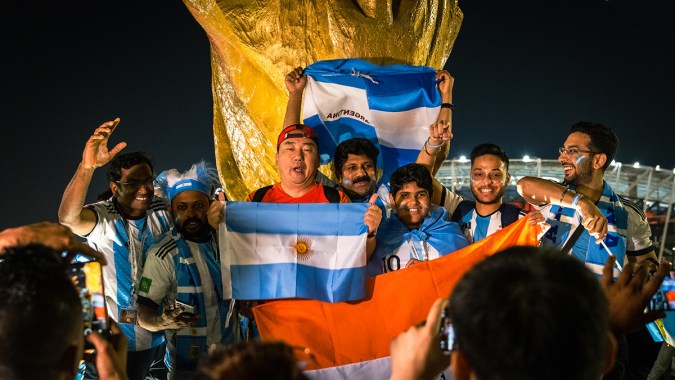
His career in Europe made him an international superstar. Messi achieved notable success in European clubs: He’s received seven Ballon d’Or trophies for being the world’s best player. He’s won three Champions League trophies and has completed two trebles (winning three trophies in a single season). However, that success and Messi’s well-established love for the Catalan city made him an outsider in his native home. Argentines have historically questioned his patriotism and criticized him for not being “Argentine enough” and caring more for Spain.

Still, Messi, who now plays for Ligue 1 club Paris Saint-Germain, has given his all to playing for Argentina on the international stage. He is currently the captain of Argentina’s national team in the World Cup and the youngest Argentine to play and score in the FIFA competition in 2006. He also holds the national record for appearances and is the country’s all-time leading goalscorer.
While the migrants we spoke with aren’t afforded the clear privileges given to Messi, they still relate to parts of his story — enough to fuel a fandom. Bound to his roots, yet, his identity being questioned is a reality for many migrants and children of immigrants. “Ni de aqui, ni de alla” (not from here, not from there) is the Spanish-language phrase popularly used to describe intersectional identities — one that can not only symbolize Messi’s career but also the lives of migrants like Jona.
“We left our country for opportunities, like him.”
This relatable nature has made him an enduring symbol for the multicultural hub of Doha, where the majority of inhabitants are from other parts of the world. As seen in these photographs we captured (below), South Asian fans have chosen to proudly don shirts, hats, and flags emblazoned with Messi’s face and his number (10) in the intentionally-known celeste and white stripes.
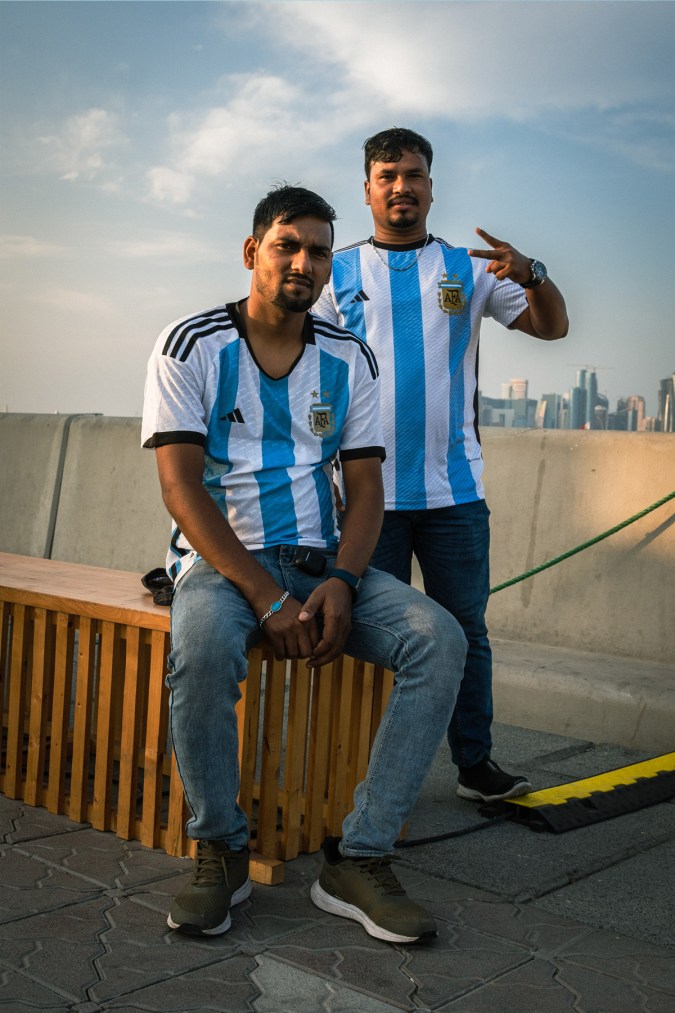
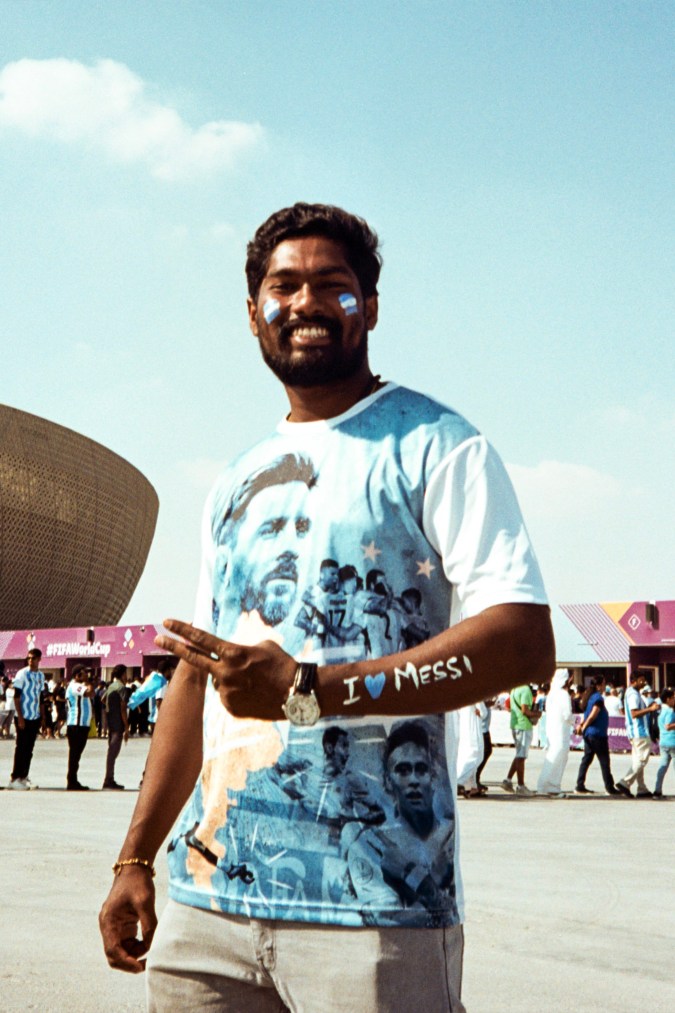
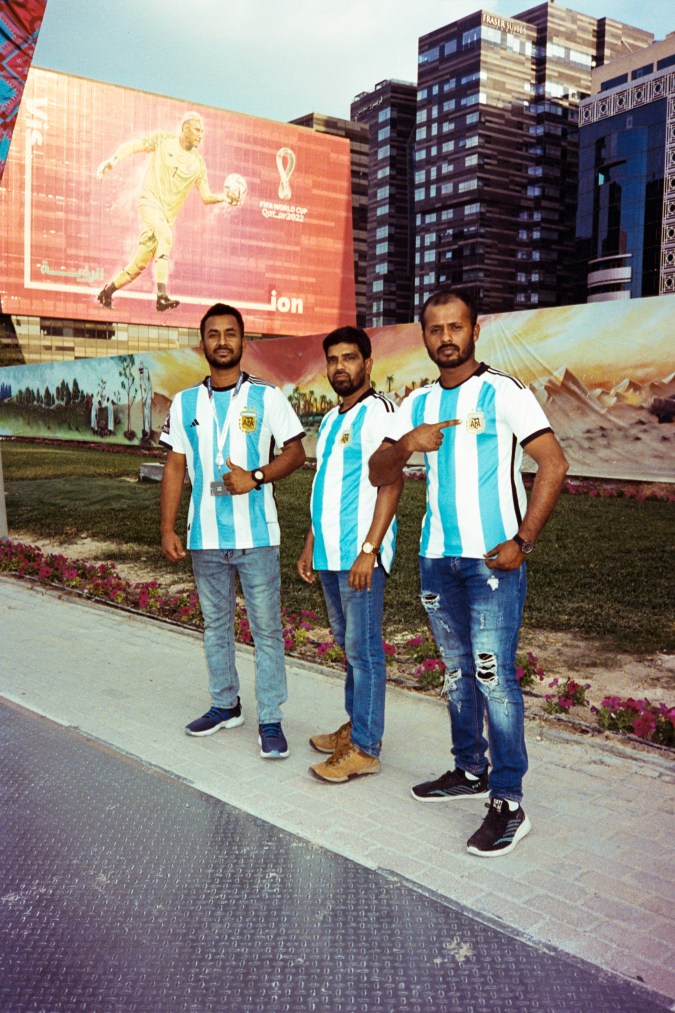
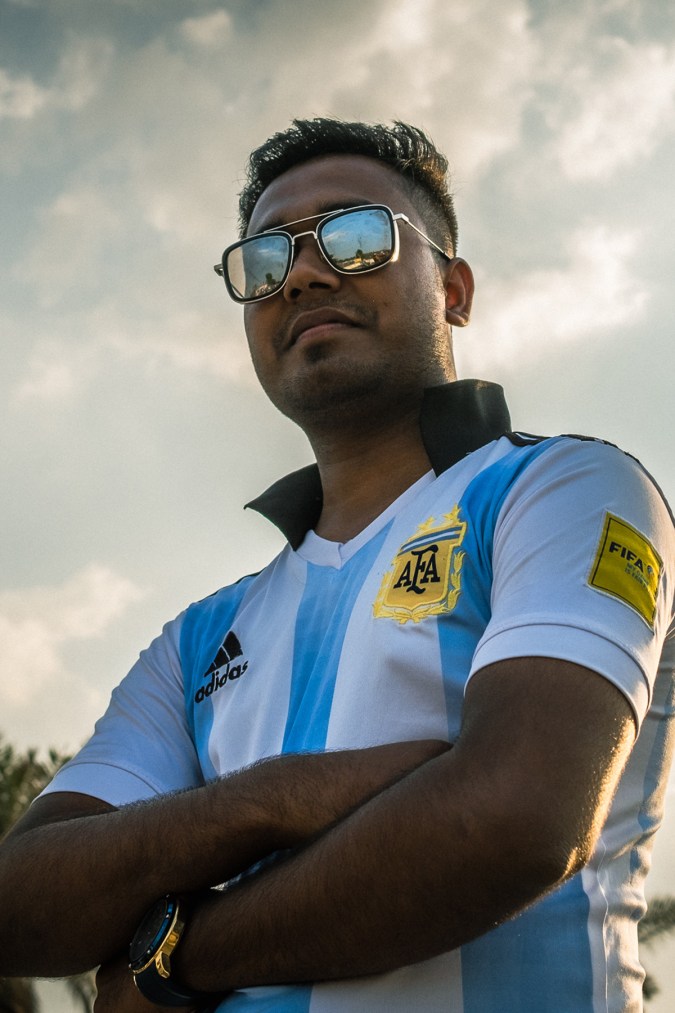
Most of Messi’s super fans seen here are workers from India, Bangladesh, Nepal, Pakistan, and Sudan. They’re employees in low-wage jobs, ones currently under a global lens over the investigations conducted by human rights groups and media outlets. As recently reported, the construction boom in Qatar for the World Cup led to the death of 6,500 South Asian migrant workers under dangerous working conditions.
Despite their circumstances, they’re finding hope in Argentina and its star player at the World Cup. On the iconic Doha waterfront, Raheem Haque, an immigrant from Bangladesh wearing an Argentina jersey with Messi’s number, explained that in his native Dhaka, Argentina had long been a local favorite during the World Cup. And before Messi, they looked to another Argentine legend: Diego Maradona.
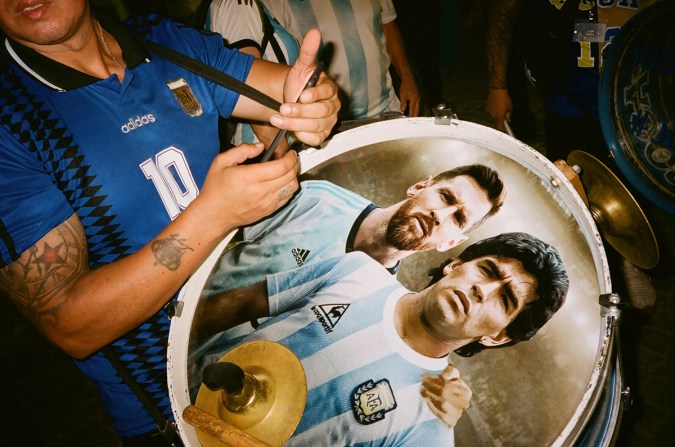
“We have loved the Argentina National Team since I was a kid. We love all that Maradona means for them,” he said, mentioning other beloved Argentine fútbol stars like Gabriel Batistuta and Juan Román Riquelme.
But for them, a fútbol star representing multiculturalism in the beloved sport stands for even more. Or, as Haque simply put it, “Then there is Lionel Messi.”




